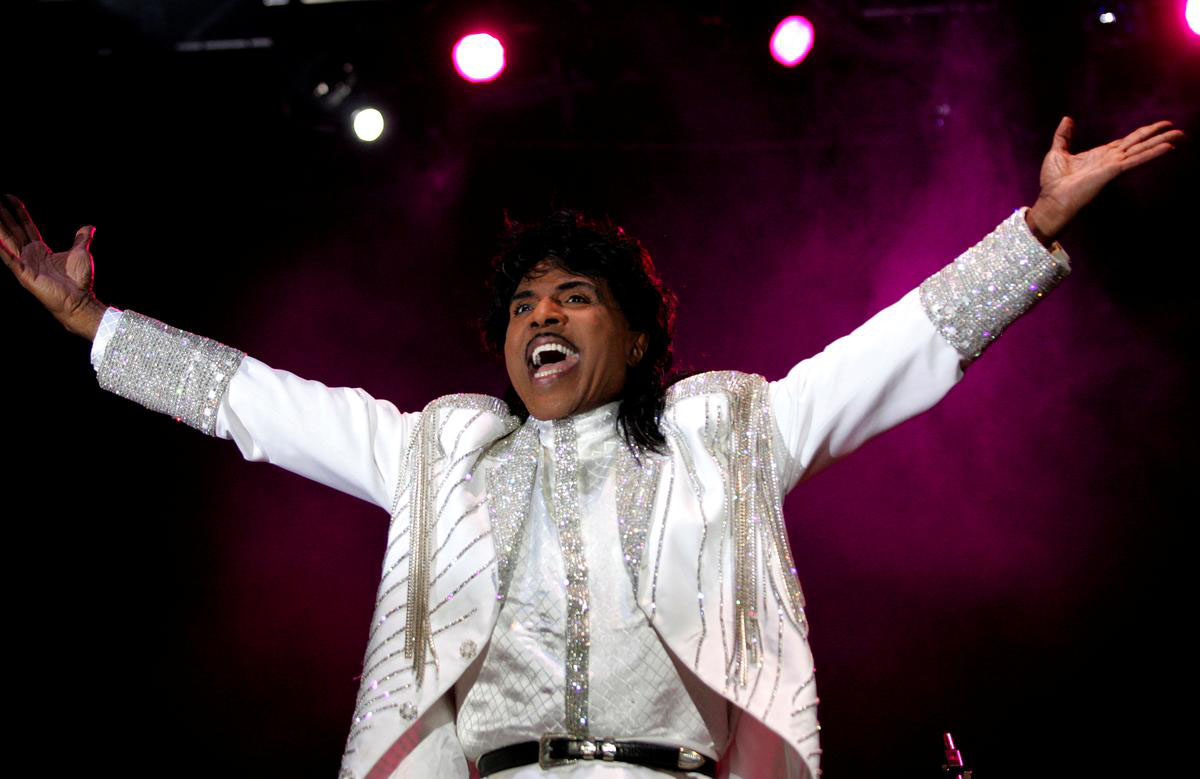(Reuters) – Little Richard, the self-proclaimed “architect of rock ‘n’ roll” who built his ground-breaking sound with a boiling blend of boogie-woogie, rhythm and blues and gospel, died on Saturday at the age of 87.
Richard, a Grammy Award winner and inductee to the Rock & Roll Hall of Fame whose electrifying 1950s hits such as “Tutti Frutti” and “Long Tall Sally” and flamboyant stage presence influenced legions of performers, succumbed to cancer.
“Little Richard died in Tullahoma, Tennessee of bone cancer. He was loved by his family and adored by millions,” his family said in a statement through their lawyer, Bill Sobel.
Richard’s bass guitarist, Charles Glenn, told celebrity website TMZ the musician had been sick for two months and that he died surrounded by his brother, sister and son.
At his peak in the late 1950s and early ‘60s, Richard shouted, moaned, screamed and trilled hits like “Good Golly, Miss Molly” and “Lucille,” all the while pounding the piano like a mad man and punctuating lyrics with an occasional shrill “whoooo!”
Time magazine said he played “songs that sounded like nonsense … but whose beat seemed to hint of unearthly pleasures centered somewhere between the gut and the gutter.”
The music drew in both young black and white fans at a time when parts of the United States still were strictly segregated. Many white artists, such as Pat Boone, had their own hit versions of Richard’s songs, albeit considerably toned down and “safer” for the pop audience.
“I’ve always thought that rock ‘n’ roll brought the races together,” Richard once told an interviewer. “Although I was black, the fans didn’t care. I used to feel good about that.”
Mick Jagger, Paul McCartney, James Brown, Otis Redding, David Bowie and Rod Stewart all cited Little Richard as an influence. Jimi Hendrix, who played in Richard’s band in the mid-1960s, said he wanted to use his guitar the way Richard used his voice.
“I am the innovator,” Richard would tell interviewers and audiences. “I am the originator. I am the emancipator. I am the architect of rock ‘n’ roll!”
Little Richard’s sonic extravagance was matched by his campy flamboyance. He wore brightly colored suits, a pencil-thin mustache, a carefully curled 6-inch pompadour, mascara, pancake makeup and lipstick.
“Elvis may have been the king of rock ‘n ‘roll but I am the queen,” he proclaimed.
He was born Dec. 5, 1932 as Richard Penniman to a poor family of 12 children in Macon, Georgia. Religion was a guiding force in his family, which attended Pentecostal, Baptist and African Methodist Episco-pal churches. His faith was so deeply ingrained that at times it would overwhelm his rock career.
His first performances were as a child in his church choir and his earliest inspirations were gospel singers, including Sister Rosetta Tharpe, who let a young Richard open her show when she stopped in Macon. A singer named Esquerita also influenced Richard’s fashion and manic musical style.
He first went on the road in the late 1940s, performing in medicine shows and drag shows and with bands.
Richard first recorded in the early 1950s and became a dominating force on the music charts starting in 1956 with hits such as “Tutti Frutti,” “Rip It Up,” “Slippin’ and Slidin’, and “Good Golly Miss Molly.” All were infused with the frantic rhythm of a runaway train.
“Shining like a quasar, the most intensely radiant object in the cosmos, he seems to tap a mystical source of mental power that is only accessible to great preachers and shamans,” McCartney wrote in the preface to the 1994 biography “The Life and Times of Little Richard.”
But Richard’s career took a turn in 1957 when he decided to abandon rock in the middle of a two-week tour of Australia.
Richard told a biographer that he saw a fireball shoot across the sky during an outdoor performance in Sydney and took it as a sign from God to change his life. He said he later determined the fireball was the launch of Russia’s Sputnik satellite.
A few months later, however, Richard was a student at a Bible college in Alabama. For a while he played only gospel music but slipped back into rock ‘n’ roll, sharing a bill with the young Beatles in Hamburg, Germany, in 1962.
It was a pattern that persisted for years as Little Richard moved between rock ‘n’ roll, alcohol, cocaine and heroin abuse and Christianity and gospel music. He would go on to become an ordained Seventh Day Adventist minister and eventually worked gospel and rock both into his shows, along with a little preaching.
“I talk about my life as a homosexual and a drug addict because I think it is right to tell people what God has done for me,” he wrote in his autobiography, “The Life and Times of Little Richard.”
Richard was among the first inductees into the Rock and Roll Hall of Fame in 1986 but missed the ceremony because he was recovering from an auto accident. Rolling Stone magazine ranked him No. 8 on its list of 100 greatest entertainers of all time and he received a lifetime achievement Grammy in 1993.
“Little Richard bent gender, upset segregationist fault lines and founded a tradition of rock dadaists devoted to the art of self-creation,” a Rolling Stone critic said. “He went with the inspiration of the moment, be it divine or hormonal, and caromed like a shiny, cracked pinball between God, sex and rock ‘n’ roll.”
As a minister, Richard officiated at weddings for Bruce Springsteen, Demi Moore, Bruce Willis, Cyndi Lauper and other celebrities.
Richard suffered a heart attack in 2013 and hip problems required him to use a wheelchair at times.
In a post on Instagram on Saturday, Richard’s longtime guitarist Kelvin Holly said, “Rest in peace, Richard. This one really stings.”
“My thoughts and prayers go out to all my bandmates and fans all over the world. Richard truly was the king!”











